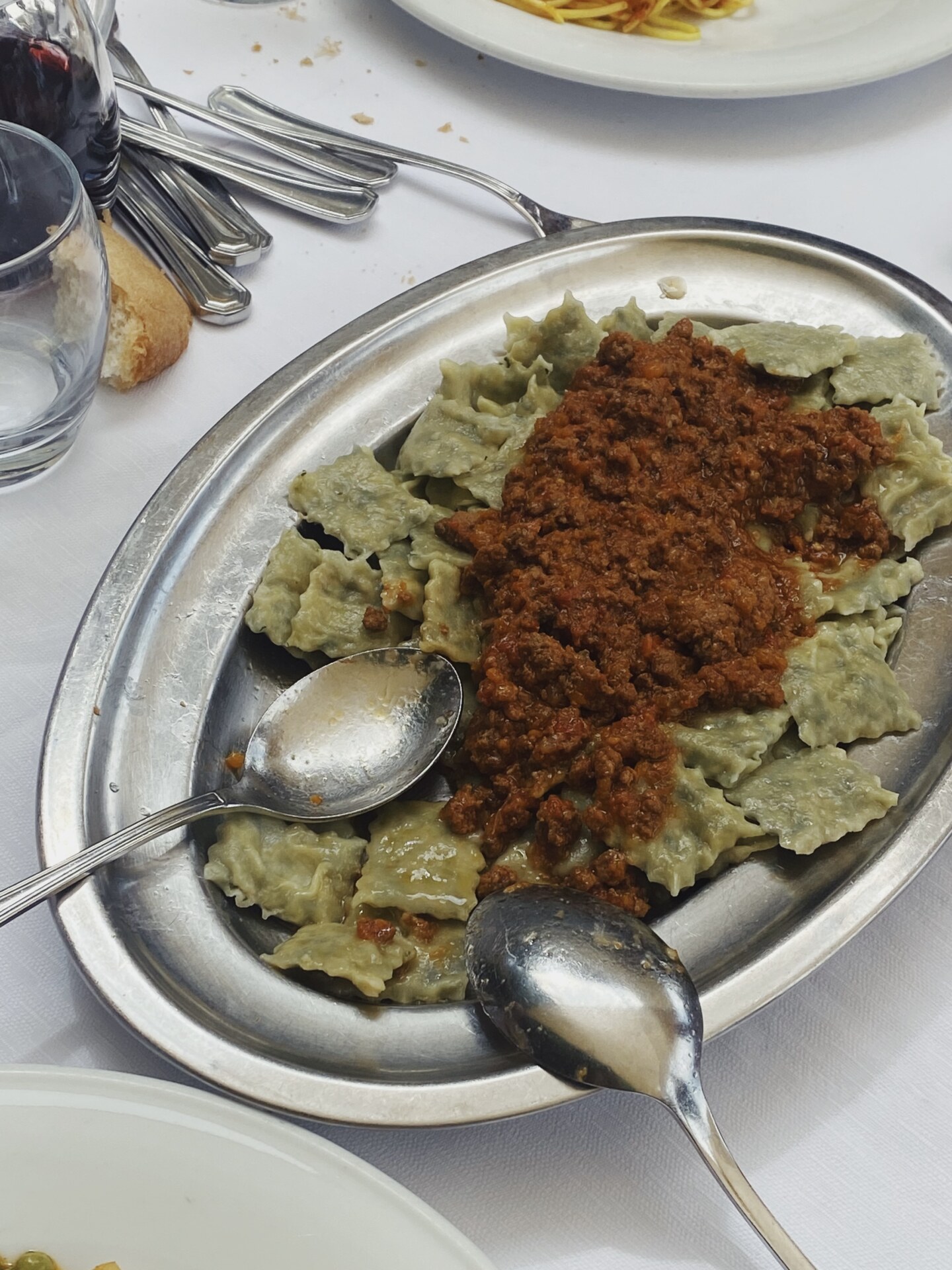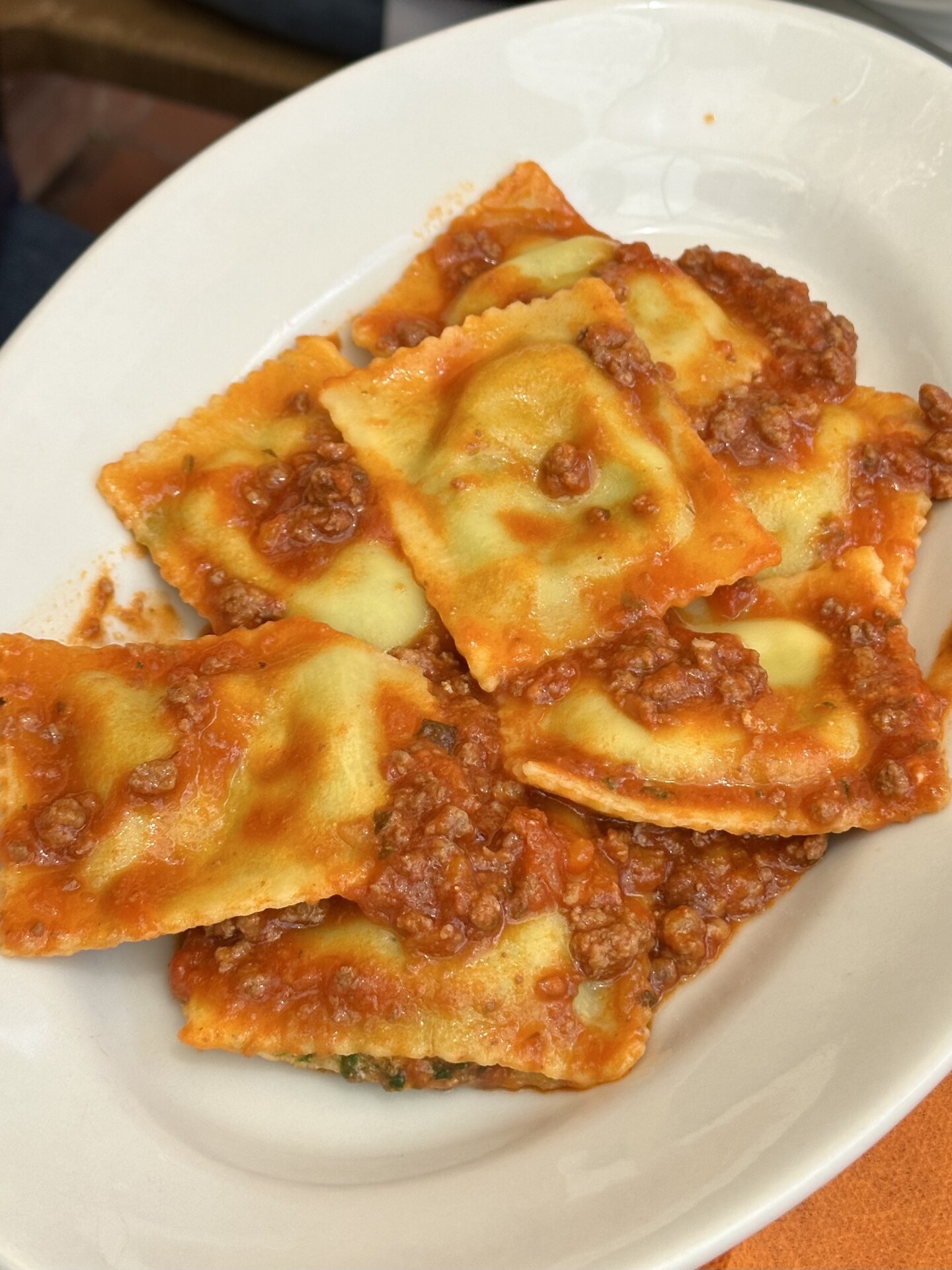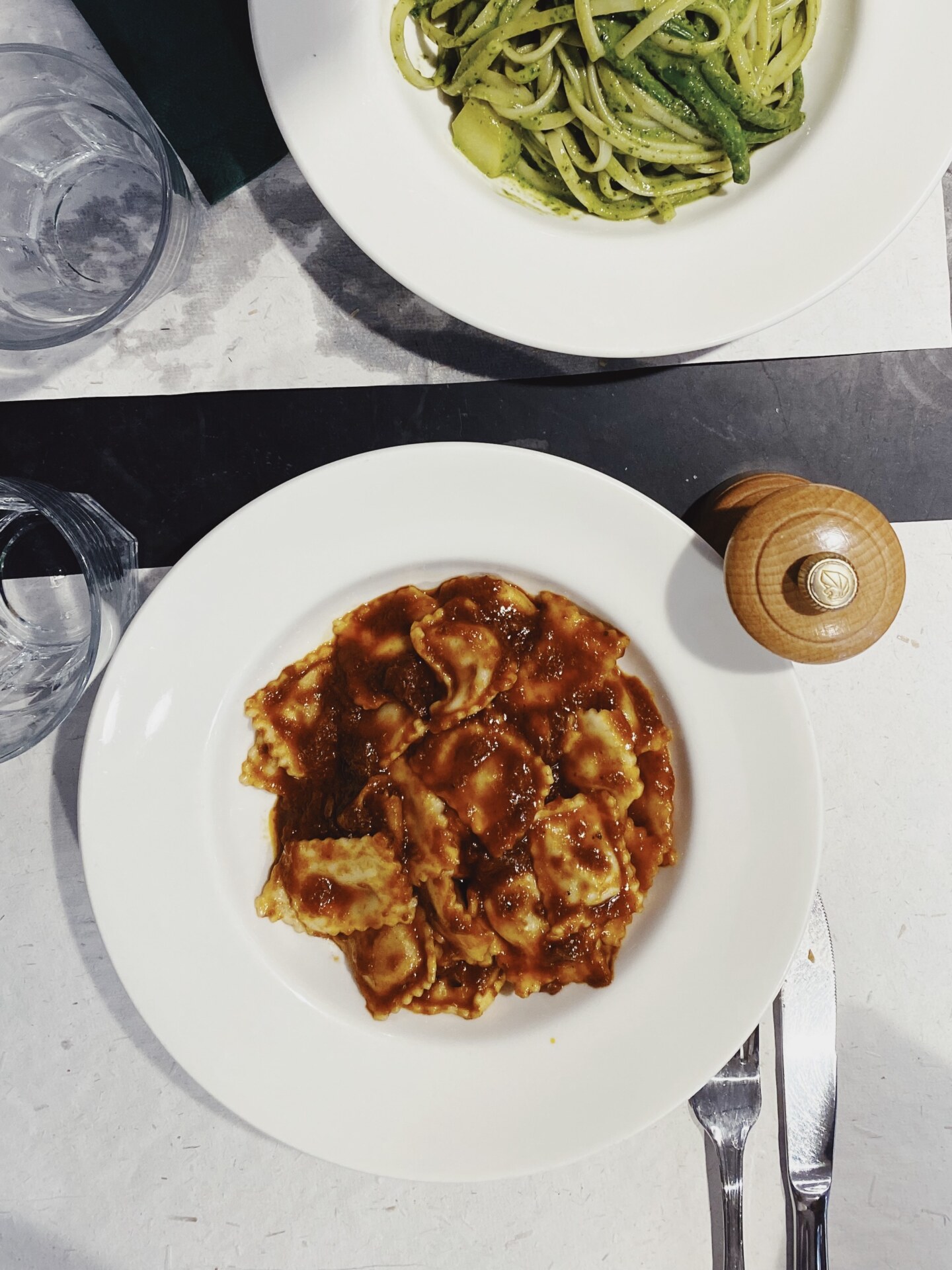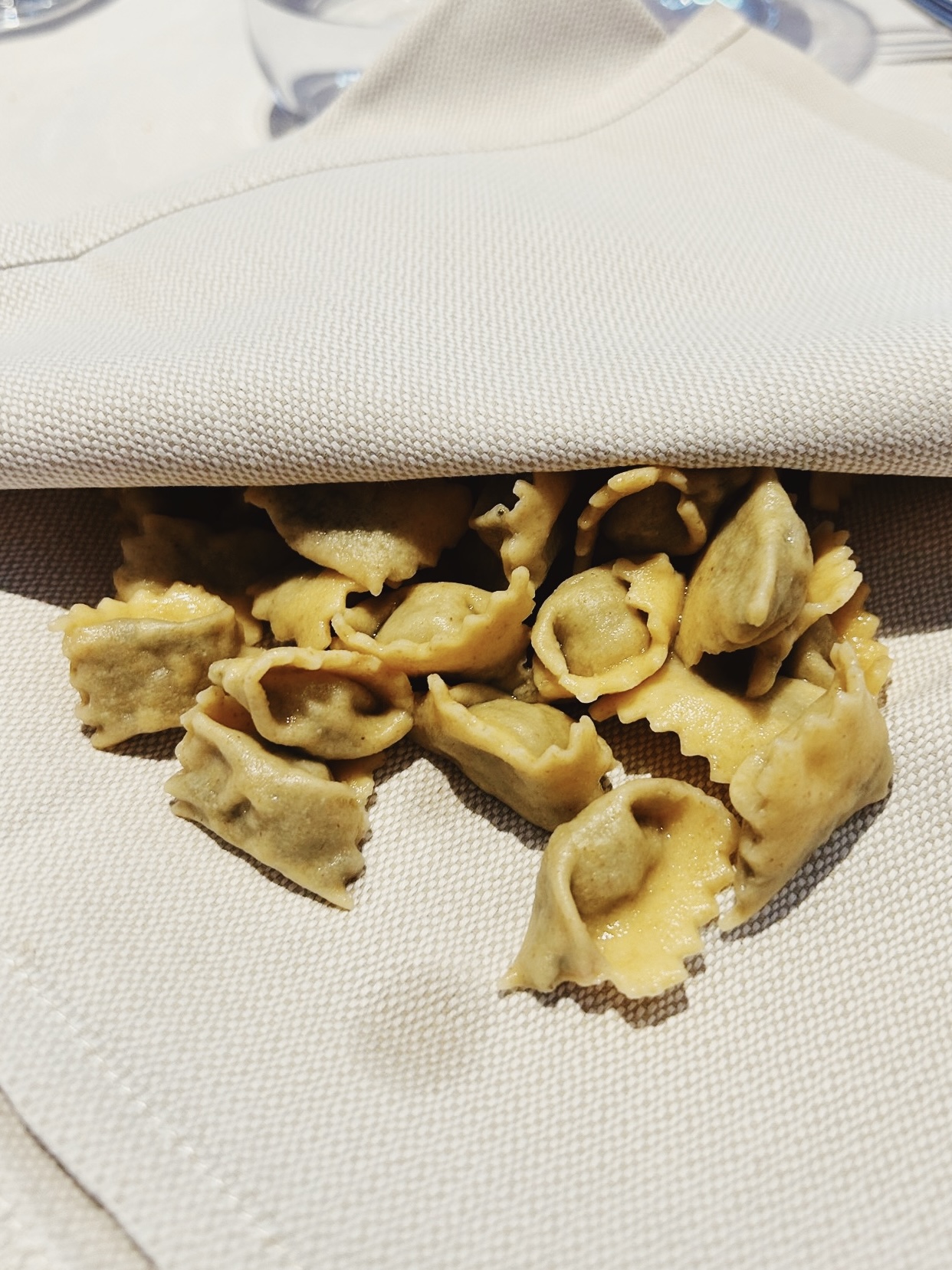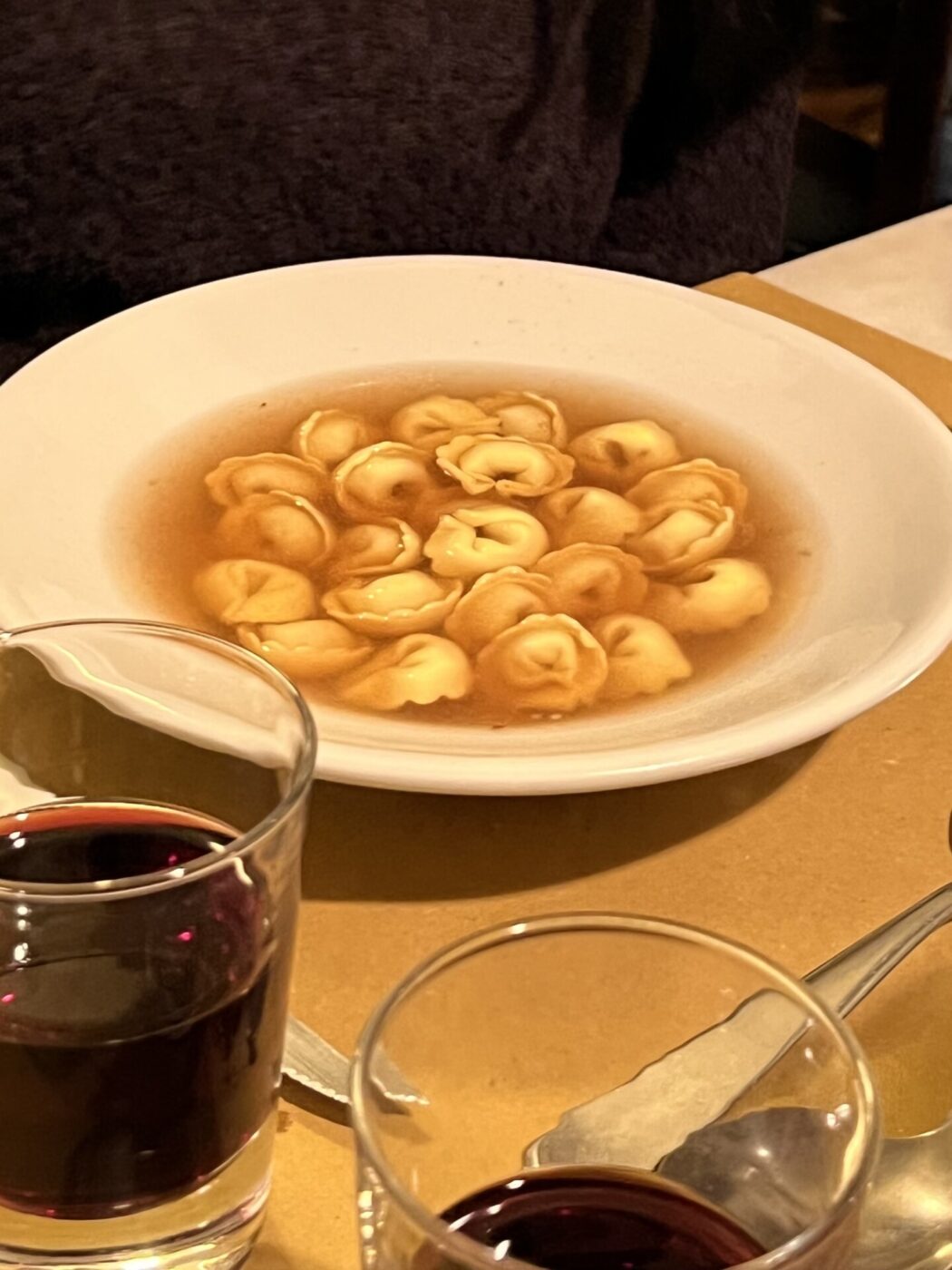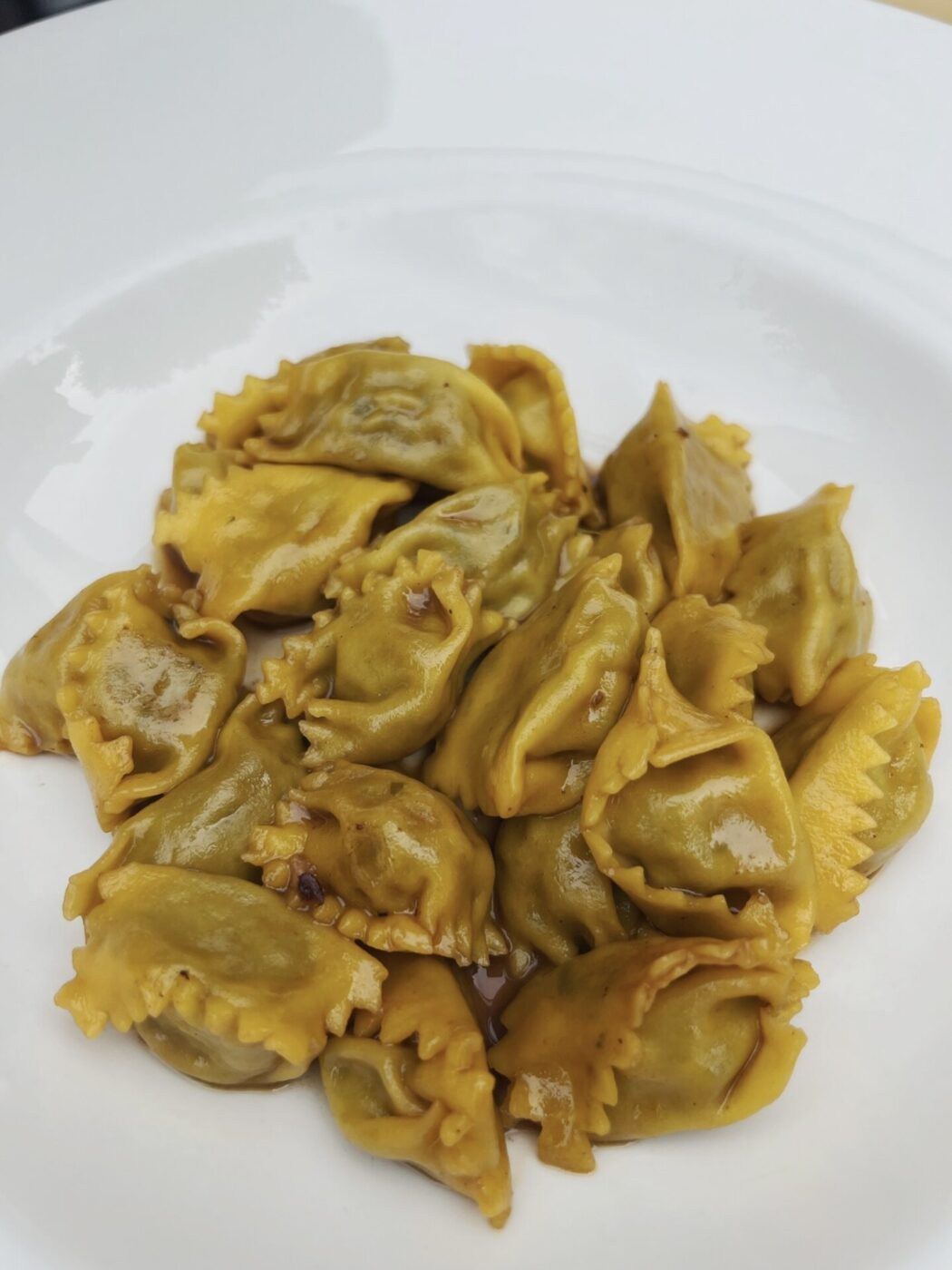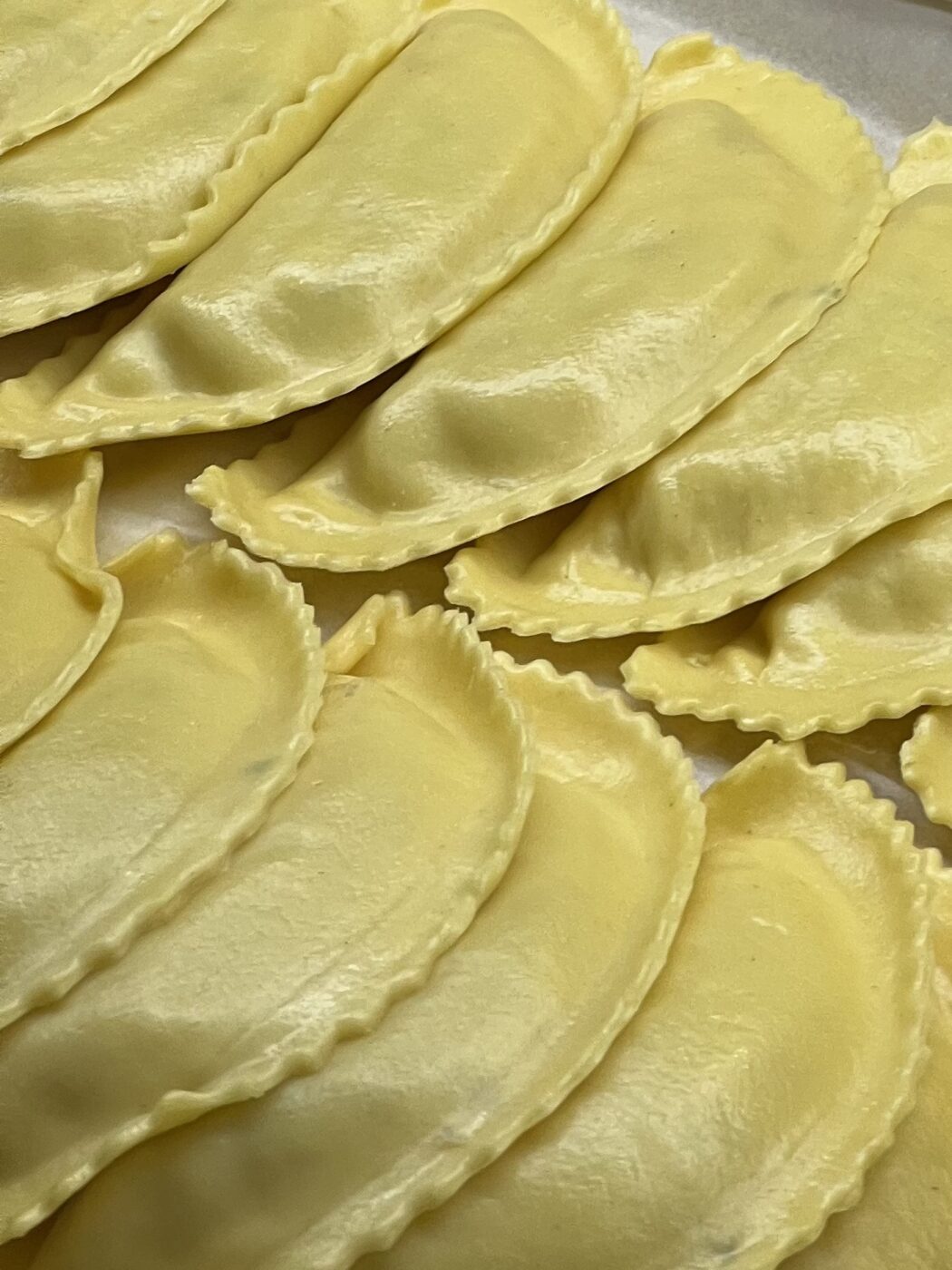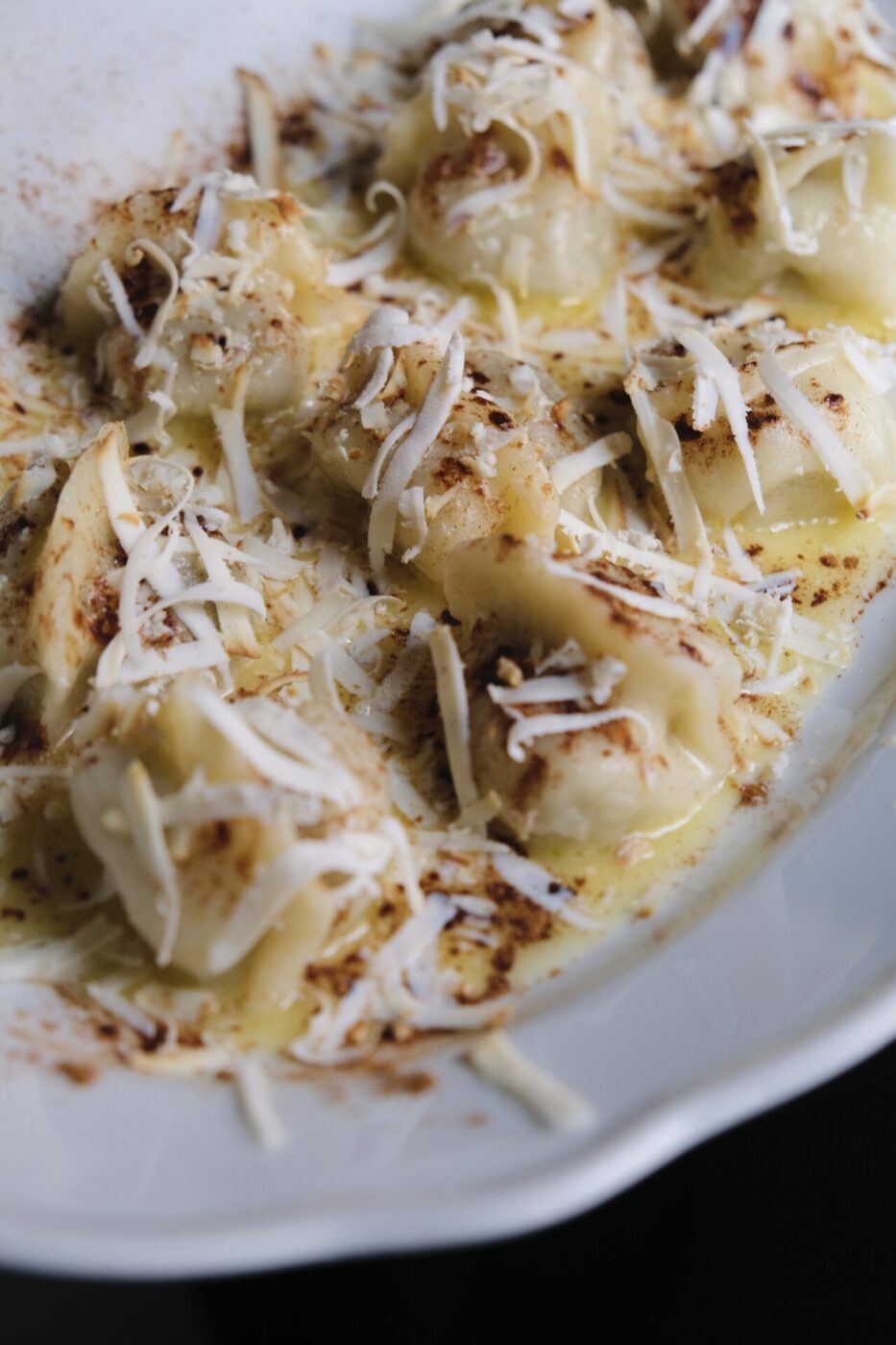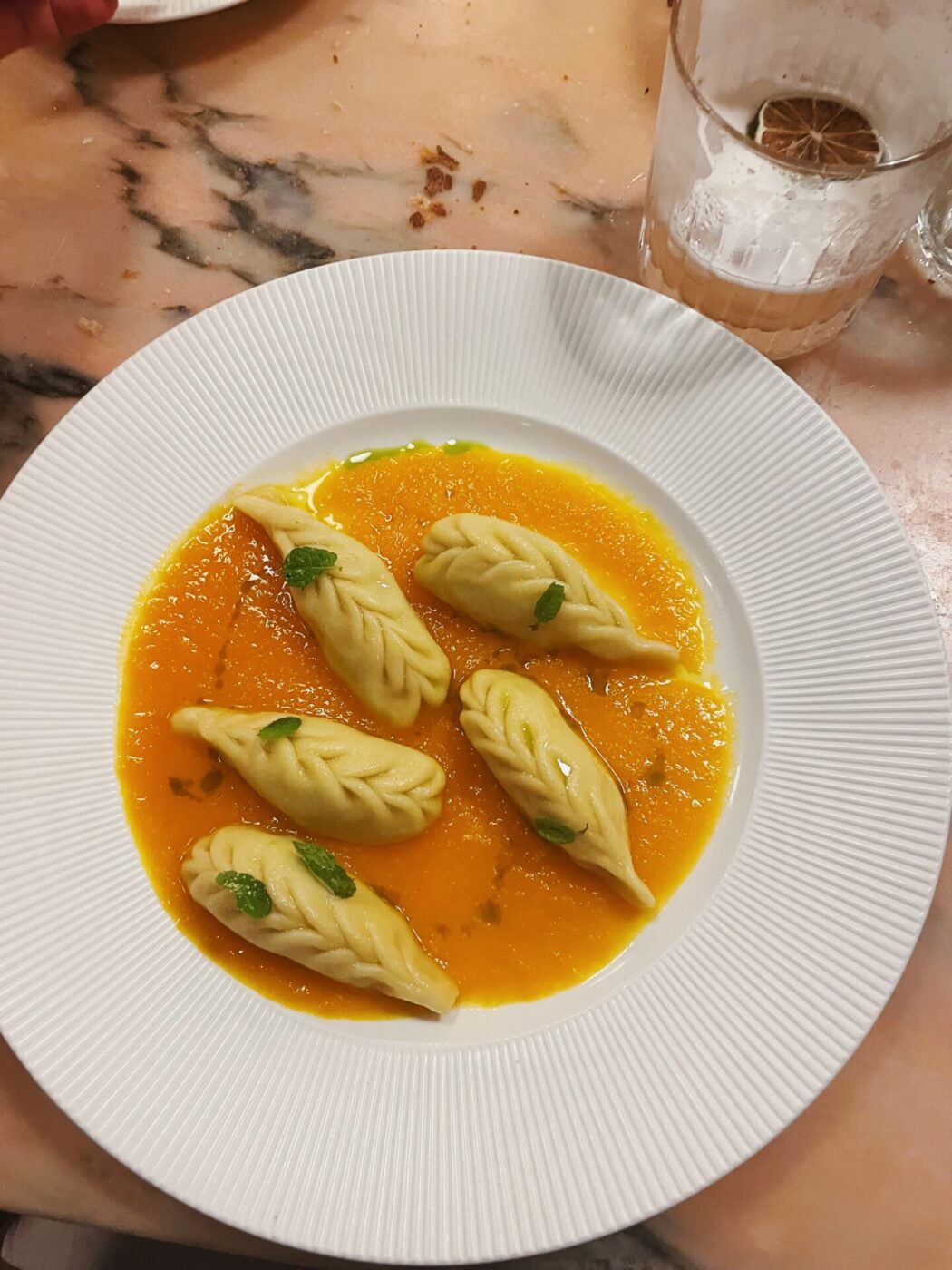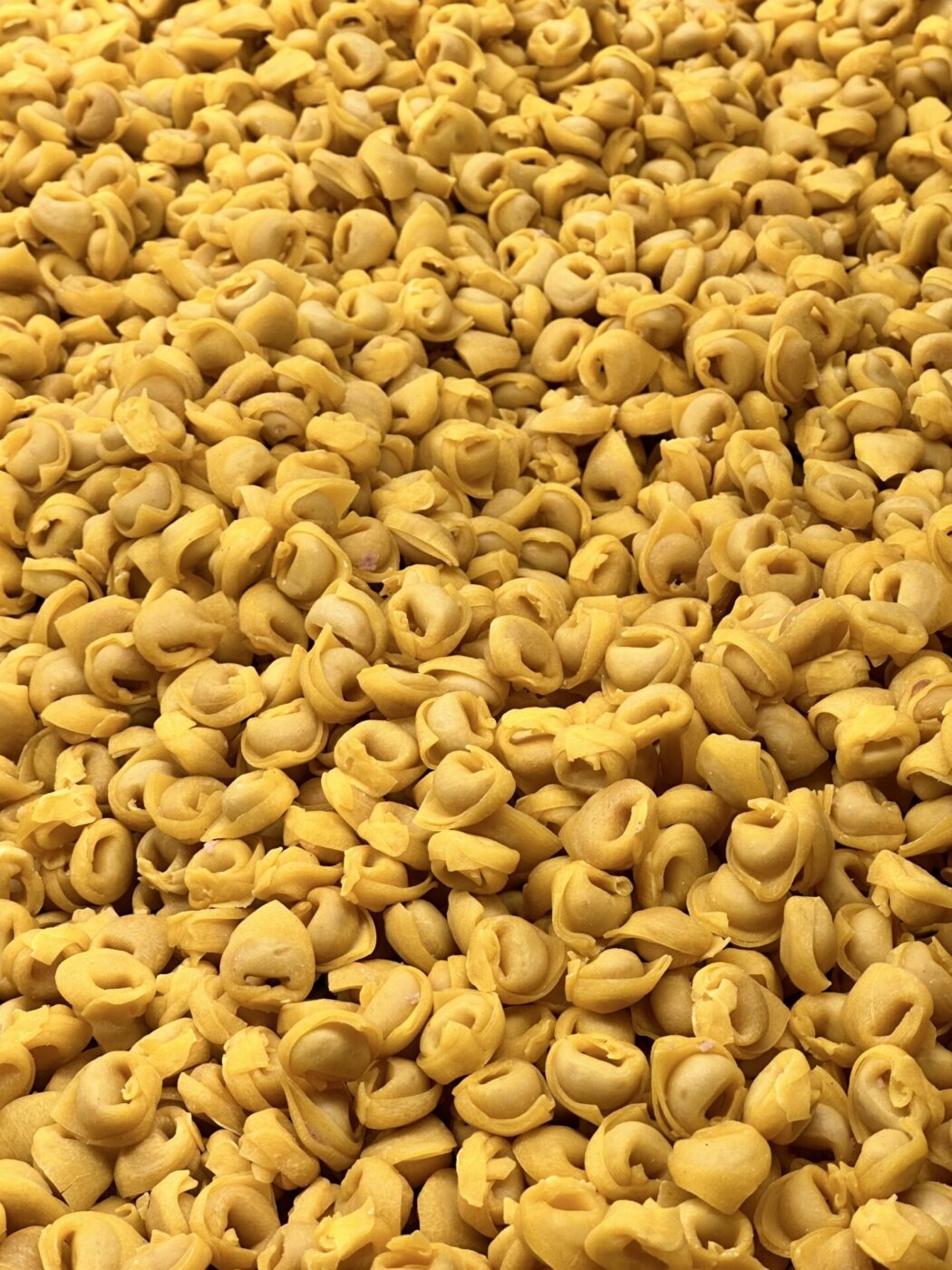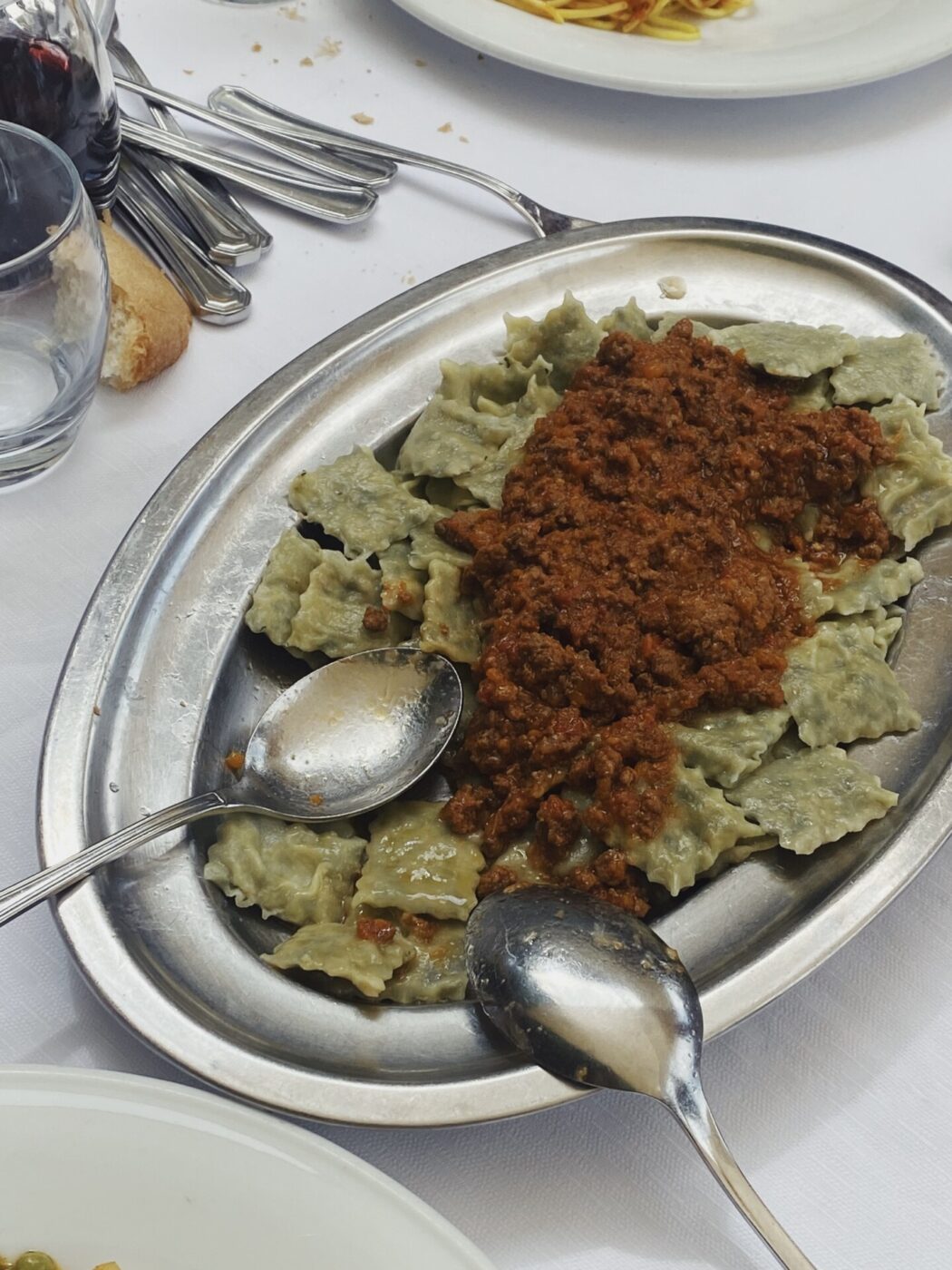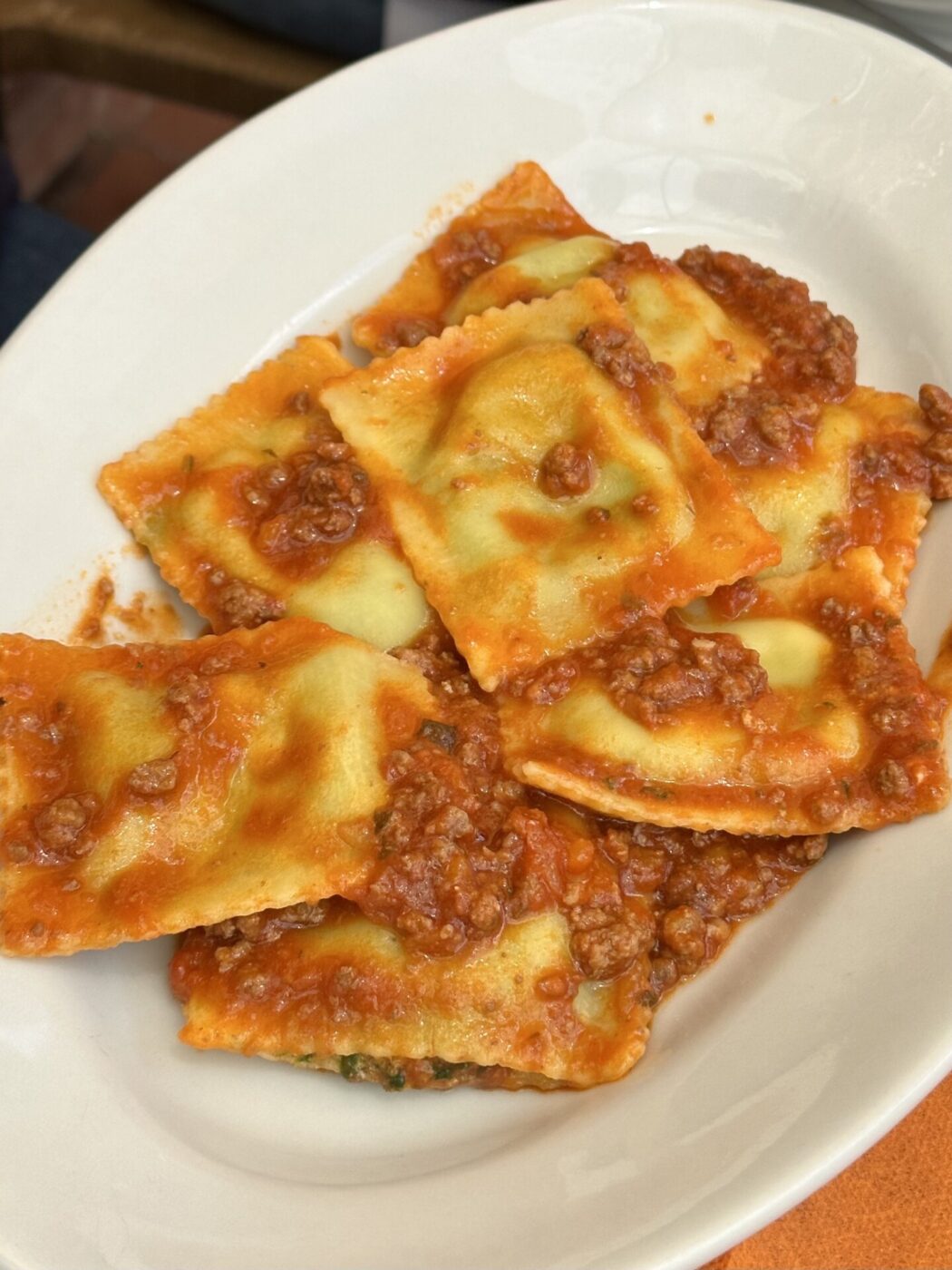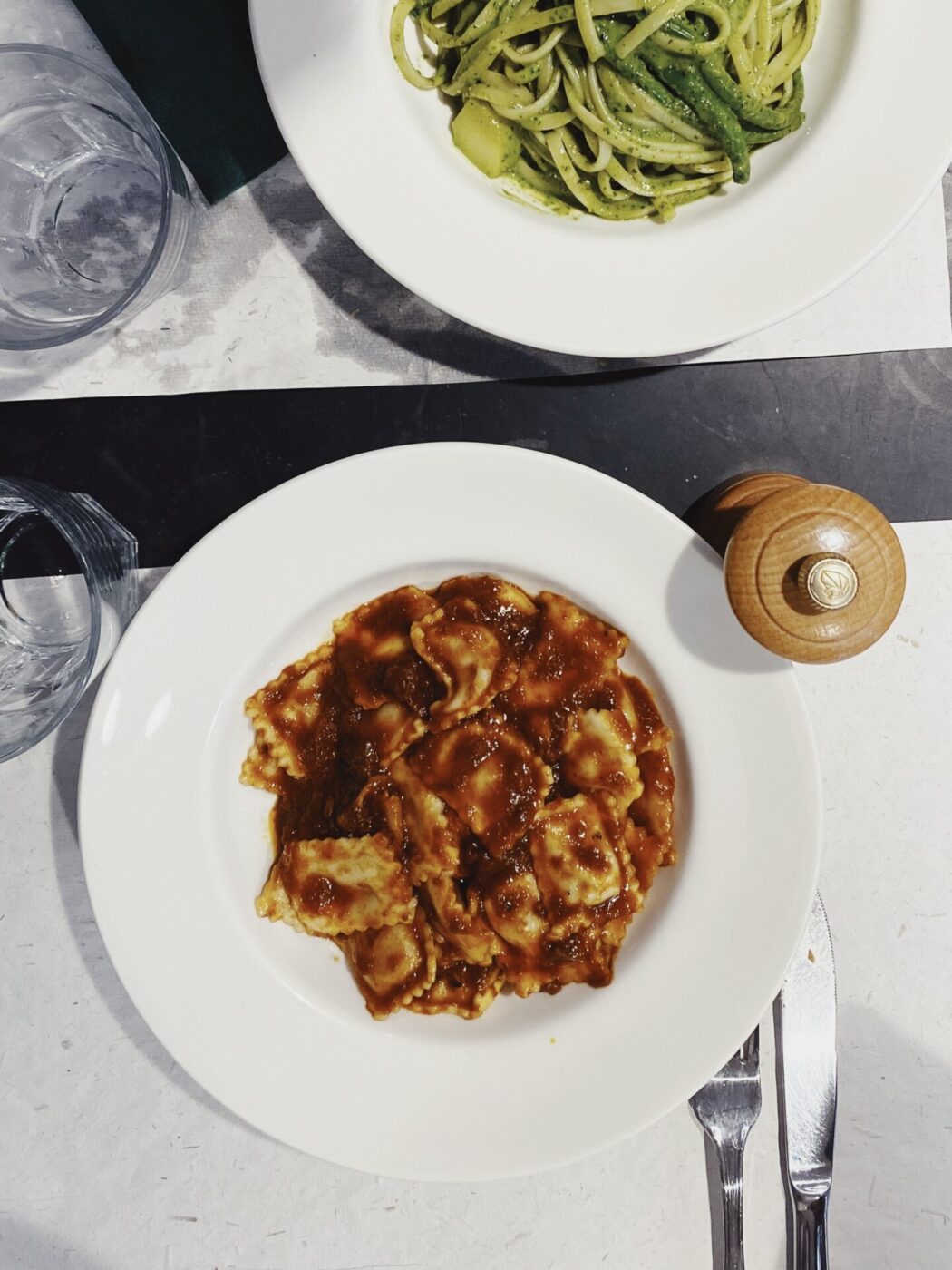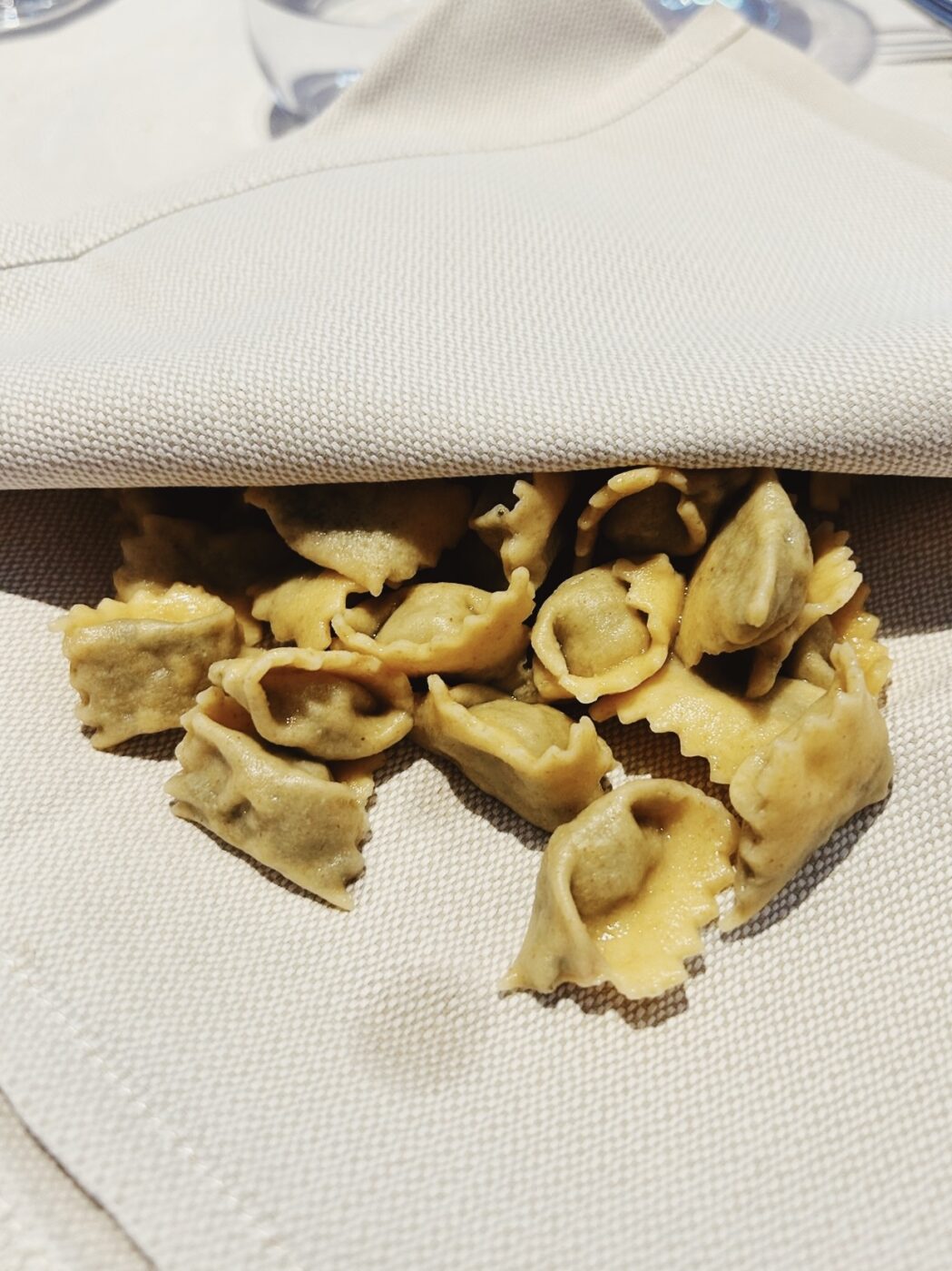In recent years, we’ve witnessed the rise to fame of ravioli del plin, a fresh egg pasta filled with a mixture of minced veal and pork and pinched into little dumplings with a movement known as “plin”. At first, as a provincial Piemontese, I was undeservedly proud that a Piedmontese dish was becoming a trend, but then I asked myself, when was the last time that my family had eaten ravioli al plin? Never. Not that we didn’t eat ravioli, but back in the Province of Cuneo in the 1990s they were called agnolotti, and they were a more humble cousin of today’s popular plin. Ravioli al plin come from the Langhe, the UNESCO area whose fame has grown so much that all its territorial characteristics have become internationally known–wine and food especially–superseding all others in the Piedmont. Local delicacies from elsewhere in the region are now being sadly forgotten.
What I was brought up on falls into this latter category and is something much humbler: my grandmother’s ris e coi ravioli, squares of egg pasta filled with rice and savoy cabbage; inexpensive ingredients turned into a pasta that was not deep yellow like the all-yolk ravioli trending on Instagram, but a more unpresuming white, reinforced with eggs and which my grandmother chose to enrich with ricotta, parmesan, and spices. On special occasions, a filling of minced veal was added to the mixture. The way we like them sauced highlights a discrepancy between my and my grandmother’s worldviews: I request them strictly soaked in butter and sage and then covered in Parmesan cheese, while my grandmother considers a meat sauce necessary, as, during her early years, meat was a symbol of wealth and signaled a family’s dignity.
So, I wonder, where in Italy are the other poor stuffed pastas, the B-list stars, kept in the shade by plin, tortelli, and tortellini? What is the difference between those primi who achieve success and become true pop stars, with image makeovers by starred chefs and restaurants, and those who remain the preserve of country inns on the edge of the highways, or hidden away in grandmothers’ kitchens?
THE ORIGINS OF ITALIAN FILLED PASTA
The earliest stuffed pasta recipe can be found in the late 14th-century Libro della Cocina, one of the earliest texts of Italian culinary tradition, written by an unknown Tuscan author. But the orteleti de enula (a kind of round pasta so ancient that the vegetable that was used to fill it–a sort of bitter green similar to dandelion–no longer exists) was born in the Veneto region in the same period. Rumor has it that even earlier, in the 12th century, the wealthiest Bolognese families chose to feast on tortellorum during Christmas festivities, an ancestor of the world famous tortellino.
The common trait, in any case, remains the fact that stuffed pastas were special dishes, particularly rich and time intensive, something to be made on noteworthy occasions. Due to the amount of labor involved, these pastas became symbols of wealth, and a way for hosts to flag that they had enough disposable ingredients to allocate some to the superfluous stuffing of pasta. By contrast, in less wealthy homes, there is an aspect of the domestic economy that underlies these dishes: the possibility of recovering discarded or less valuable ingredients, seasoning them, and making them into a somewhat special dish, worthy of being served on Sundays.
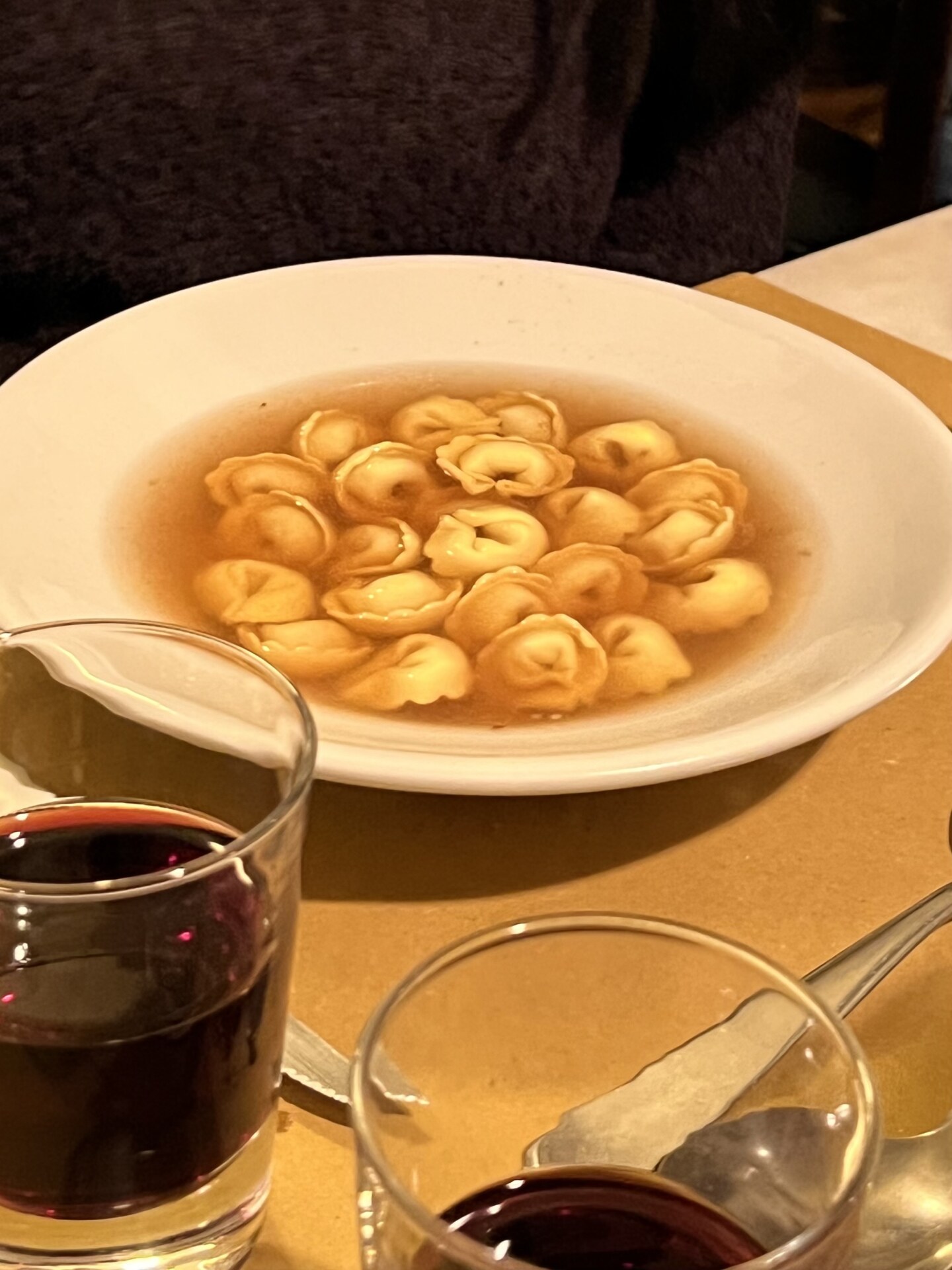
Tortellini in Brodo
LESSER-KNOWN ITALIAN FILLED PASTAS
So from north to south, here is a small list of some stuffed pasta variants worth looking for. If, in your search, you come across other unexpected, unknown, and equally good ones, I would see that as a victory.
PIEDMONT
Remaining in Piedmont, but moving away from the spotlight of the UNESCO zones, many less noble variants can be found. Often, despite the importance of enriching ravioli with meat, less prized animal parts can be discovered in the filling, such as brains, in Marengo, or donkey meat in Monferrato. The origin of the latter dates back to the days of via del sale, when donkeys were used to transport salt and anchovies and, when they were no longer useful for that, were used to feed merchants.
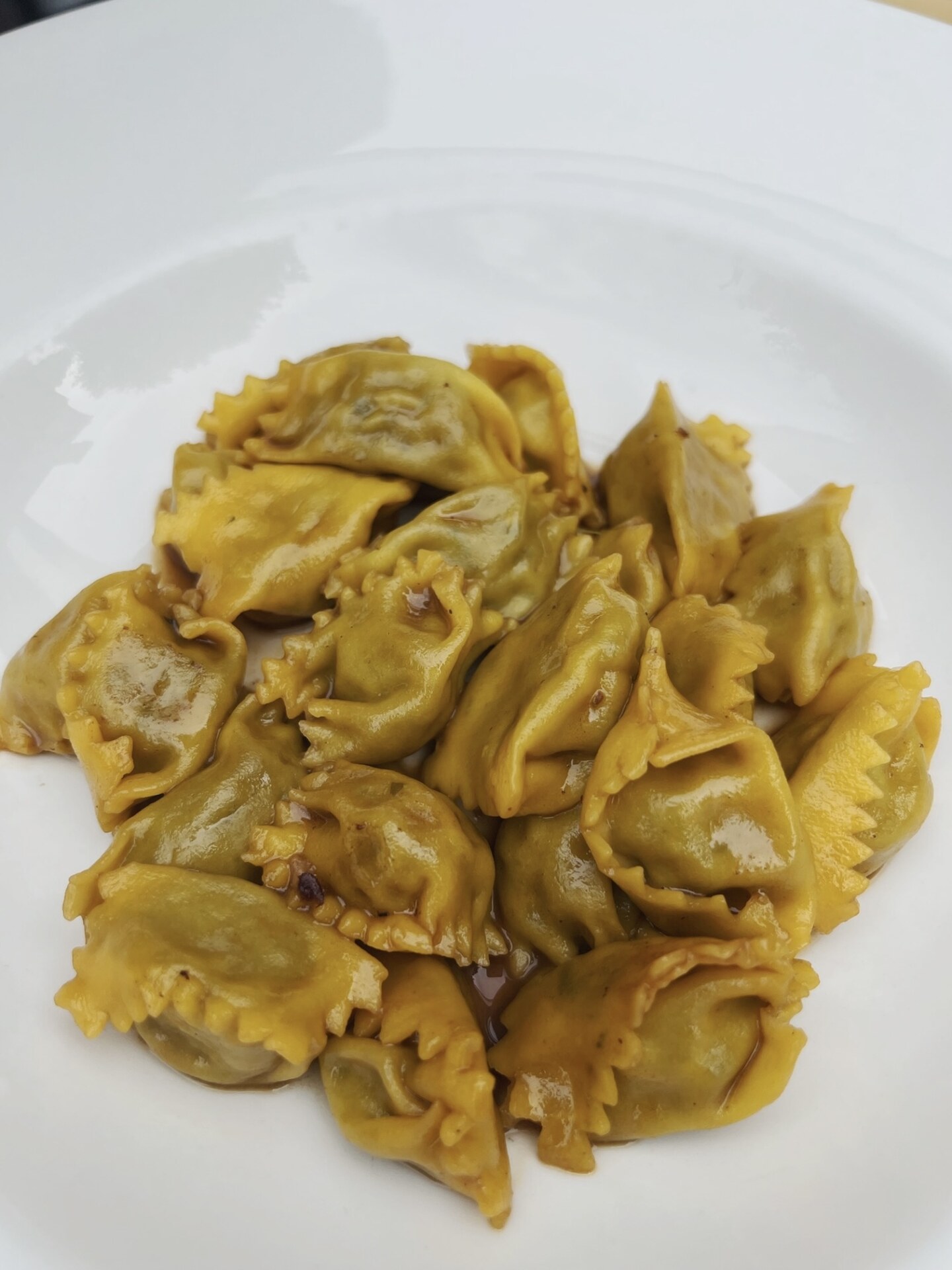
Agnolotti del Plin
LIGURIA
Liguria is home to pansotti, which, although more famous, is worth mentioning because it’s one of the rare cases of vegetarian filled pasta. This pasta–made with water, flour, and white wine–is stuffed with the sour Genovese cheese prescinsêua (or ricotta), Parmigiano, and preboggion, a bunch of wild (usually foraged) herbs that includes chard, borage, radicchio, dente di cane, talegna, raperonzolo, nettle, pissarella, parsley, and early cabbage. The classic dressing is a creamy walnut sauce, similar to pesto, of which it is an ancestor, but with the sweet nut swapped in for basil. Less well-known are the zembi d’arzillo: round or square egg pastas filled with white fish and served with tomato sauce and basil. (The name zembi comes from Arabic, while arzillo is the scent of seaweed rising from the sea.)
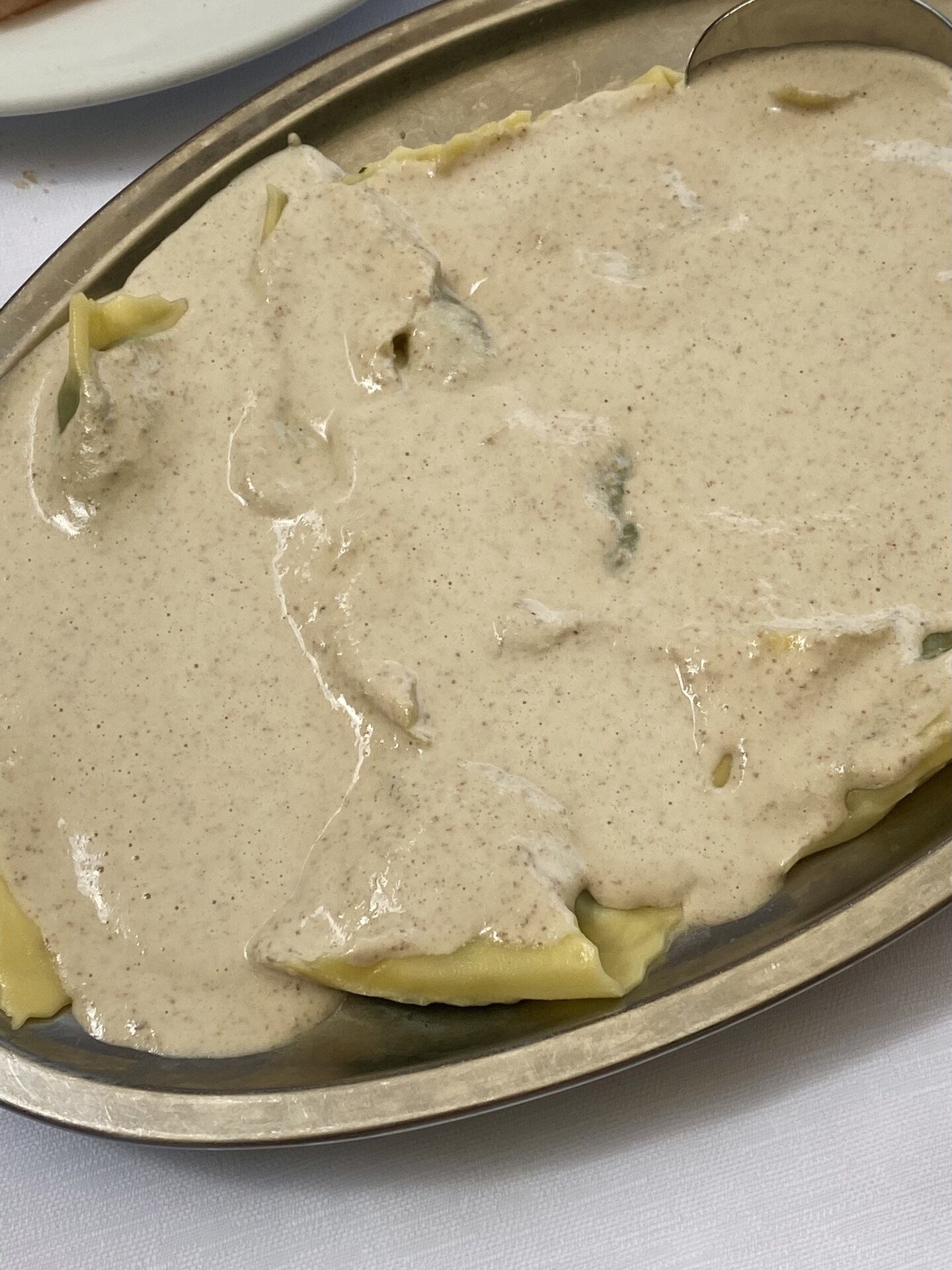
Pansoti in Noci
LOMBARDY
Lombardy is not all risotto: from the Bergamo and Brescia areas come casonsei, with a characteristic half-moon shape and several local variations. In the Bergamo area, the typical recipe is a particular balance of sweet and savory, with a filling of meat, cheese, breadcrumbs, pears, and amaretti biscuits, although in the past the taste was much more sweet and sour, with chopped pears, almonds, and mostaccioli (honey and must biscuits). Don’t be surprised, however, if you move a few kilometers away and find different shapes, fillings, and even names. In lower Lombardy, the filling is simplified with bread, cheese, and herbs in spring. In Barbariga, the filling is made of herbs and cooked ham. In Longhena, there are several variants, though the original recipe is made of breadcrumbs, Grana cheese, parsley, and garlic. In Valcamonica, meat is again included, usually minced pork, with potatoes and, when in season, peruc: a kind of wild herb (bonus henricus) that resembles spinach. In the upper Valcamonica, the sweet-savory balance with pears, amaretti biscuits, and sultanas returns.
SOUTH TYROL
In South Tyrol, probably originating in the Pustertal valley, schlutzkrapfen are traditionally made with a mix of barley or rye flour and a mixture of spinach and ricotta, which was originally replaced with turnips and potatoes, depending on availability. Sometimes smoked bacon is added–a culinary influence courtesy of the region’s Austrian neighbors (and history).
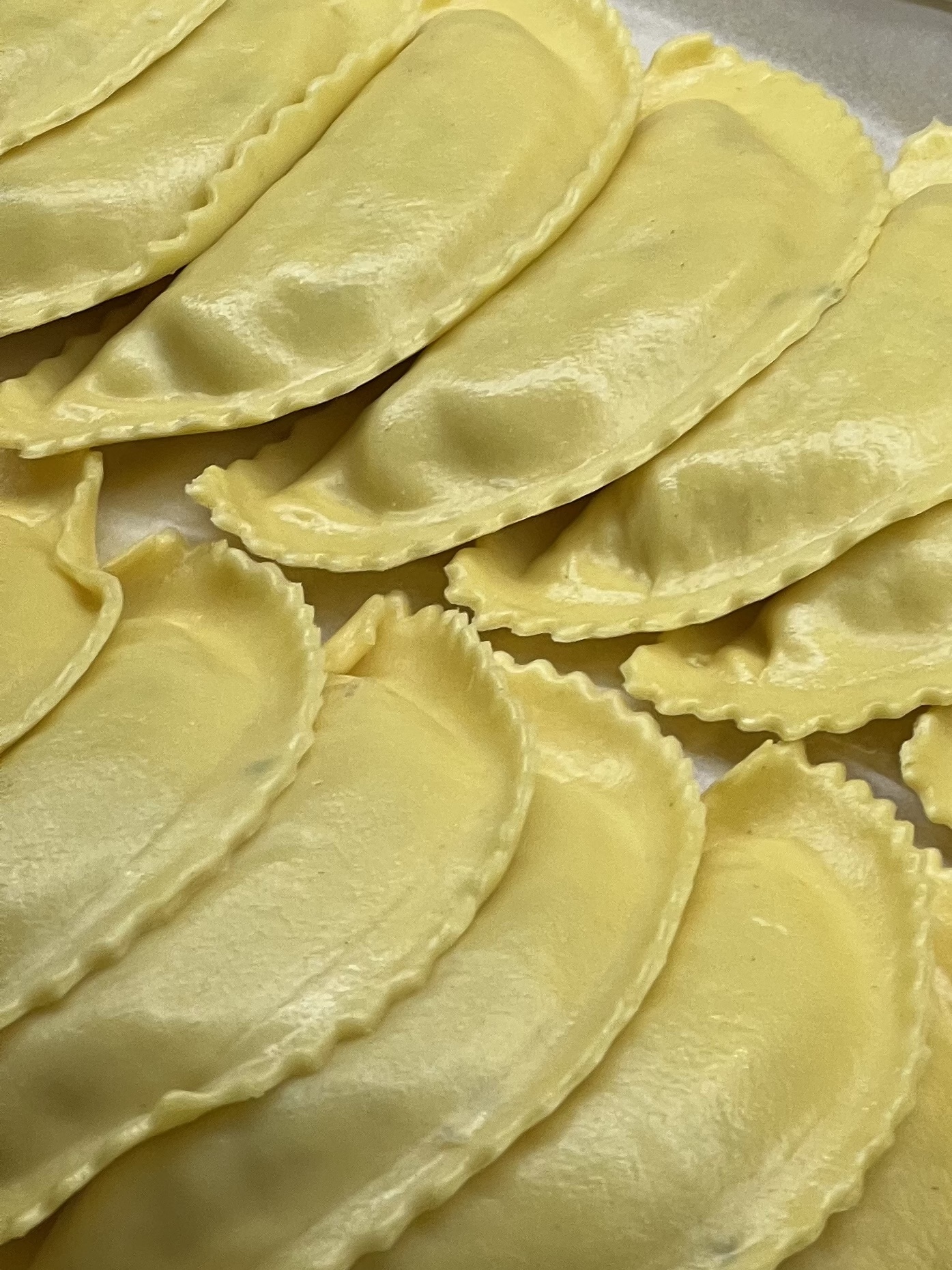
Schlutzkrapfen
FRIULI-VENEZIA GIULIA
Further east, in Friuli-Venezia Giulia, the cjarsons of Carnia encapsulate the diverse history of the place in infinite recipe variations–of which there are more or less as many as the families living in the valley. A flour and/or potato pasta, filled with herbs, crumbled biscuits, chocolate, figs, rum, tarragon, mint, cinnamon, almonds, sultanas, mustard, pine nuts, and spices, these ravioli are a rich, vegetarian dish suitable for celebrating eve days, typically Easter and Christmas. They’re a testament to the region’s historic position at the crossroads of trade with Middle Europe, seen in the use of spices, but also of the need to use whatever is available for the constantly varying fillings.
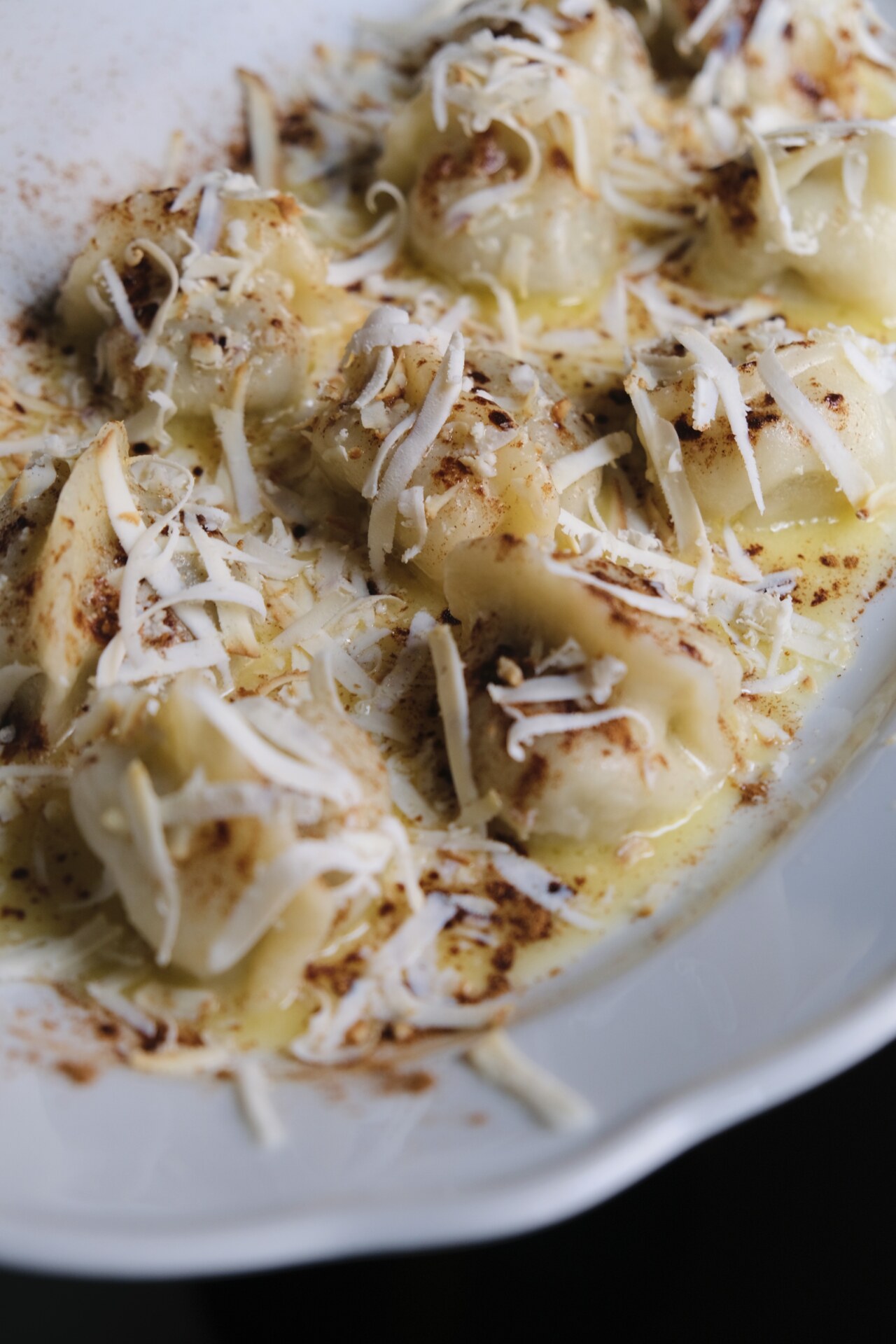
Cjarsons
BASILICATA
In Basilicata, raviolo scapolese refers to large rectangles of egg pasta, filled with all the typical products of the village of Scapoli: dried sausage, bacon, chard, potatoes, scamorza cheese, goat’s ricotta cheese, and fennel are finely chopped and squeezed into the pasta, which is often served with braised goat leg sauce.
SICILY
The island of Pantelleria is a ravioli hotspot in Sicily, with two primary variations: “bitter” (but actually salty) and “sweet”. The former, ravioli amari panteschi, is served as a primo and filled with goat cheese seasoned with salt, pepper, and mint. In the sweet version, the pasta is a thin, crumbly pastry filled with ricotta cream with chocolate, sugar, and grated lemon peel.
SARDINIA
Sardinia has its own way of being part of the Italian tradition and, at the same time, of differentiating itself from it. Culurgiones are a type of stuffed pasta that is more similar in appearance to Chinese jiaozi dumplings, with their beautiful spike-like closure. The pasta is a thin veil that requires no eggs–just flour, semolina, oil, and water. The filling, which is traditionally made of potatoes and pecorino cheese but can also be made of chard, is refreshed by the use of mint, in a fusion style that characterizes the island. Seasoned simply with tomato, it is one of Ogliastra’s signature dishes.
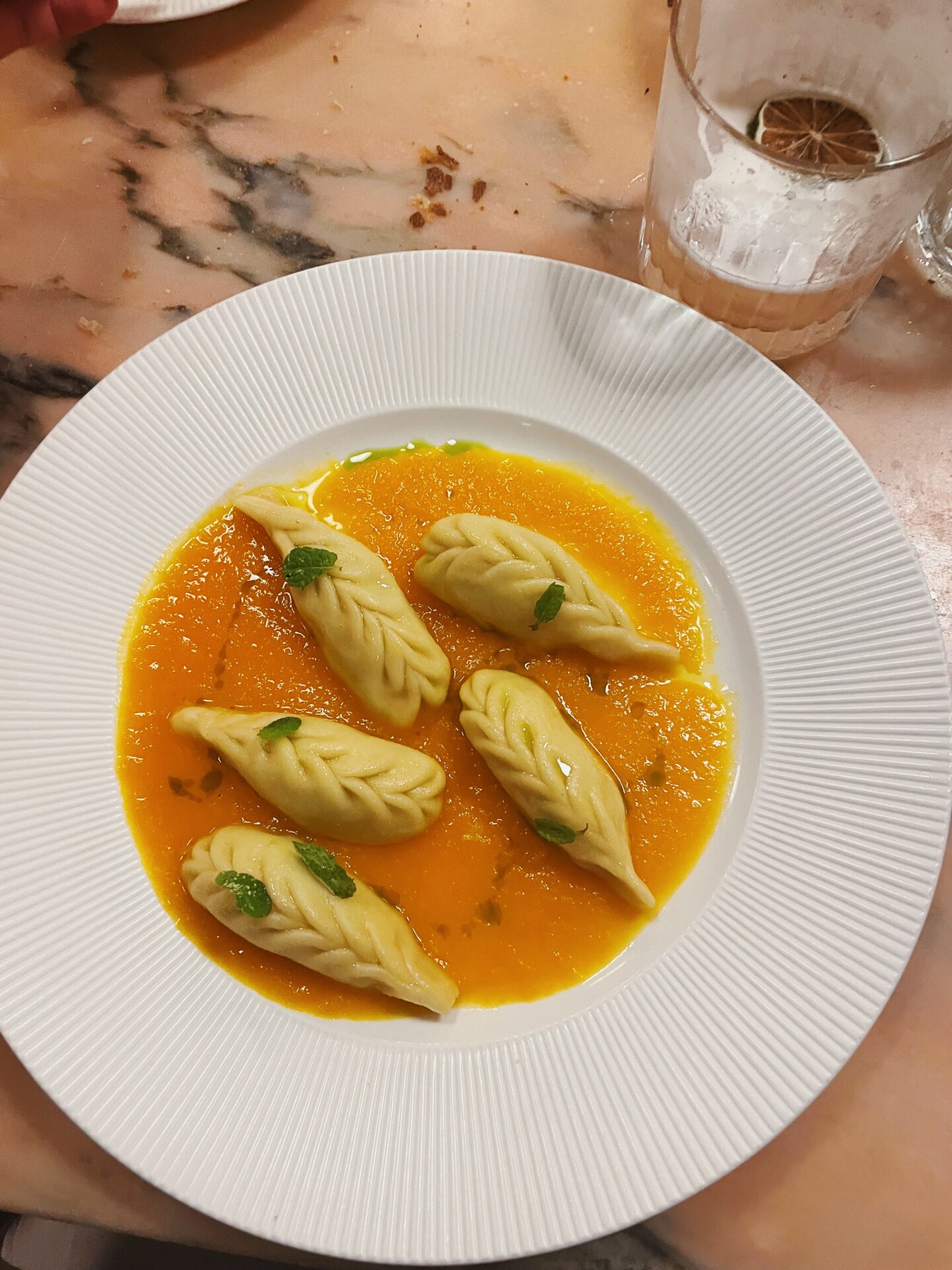
Culurgiones
EMILIA ROMAGNA
Opening the can of worms that is Emilia Romagna’s filled pastas is an extreme journey, touching on a full-bodied history and infinite variations of shapes, fillings, sizes, names, and seasonings. Far be it from me to throw myself into this stormy sea, but I must say that, although the most well-known types of stuffed pasta in Emilia Romagna are tortellini (stuffed with pork, ham, mortadella, Parmesan cheese, nutmeg, and egg), cappelletti (with capon or chicken meat, pork, ricotta cheese, egg, and grated Parmesan cheese), and anolini (with slow cooked beef, parmesan cheese, breadcrumbs, and egg ), it is also worth trying something less popular.
What about the fattisù, typical of Piacenza’s wintery days, made with cabbage, cheese, and sausages wrapped up in a thinly rolled, candy-shaped egg pasta? Or the spoja lorda, stuffed squares of egg pasta with jagged edges, filled with ricotta, eggs, and Parmesan cheese, served in broth or dressed with various sauces? I can keep going–and I haven’t even mentioned the tortelli sulla lastra (if you want to try them, go to the Forlì Apennines)–but the best advice for you, if you are looking for the holy grail of stuffed pasta, is: travel to lesser-known towns and let yourself be surprised by the endless hidden fillings.
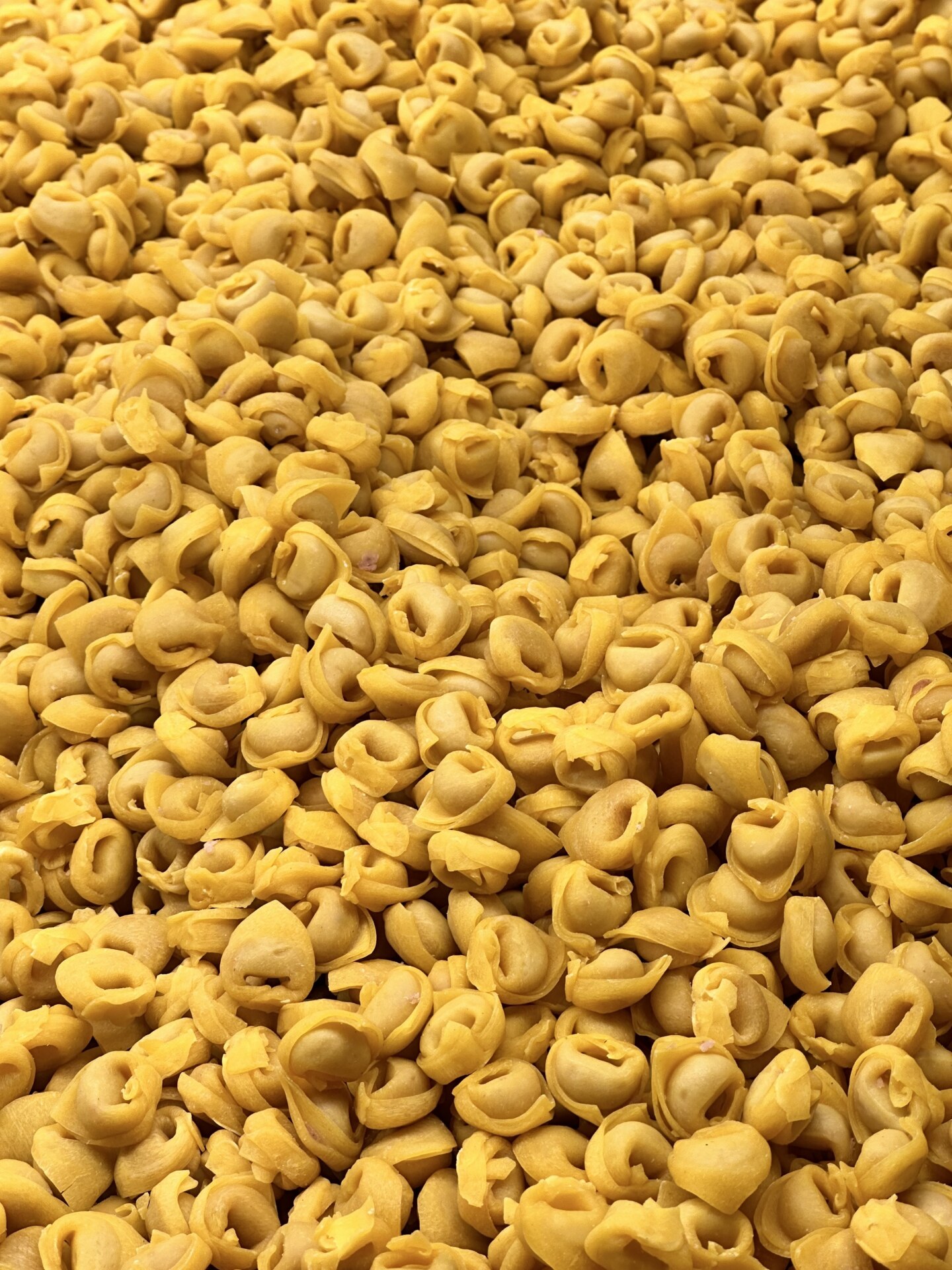
Tortellini


